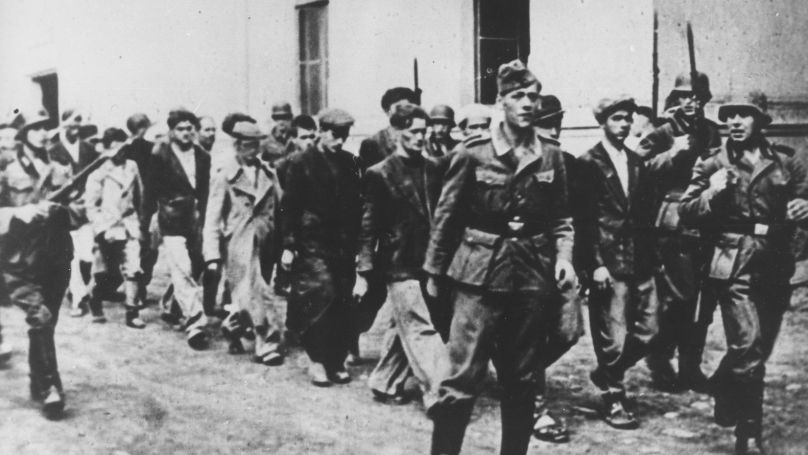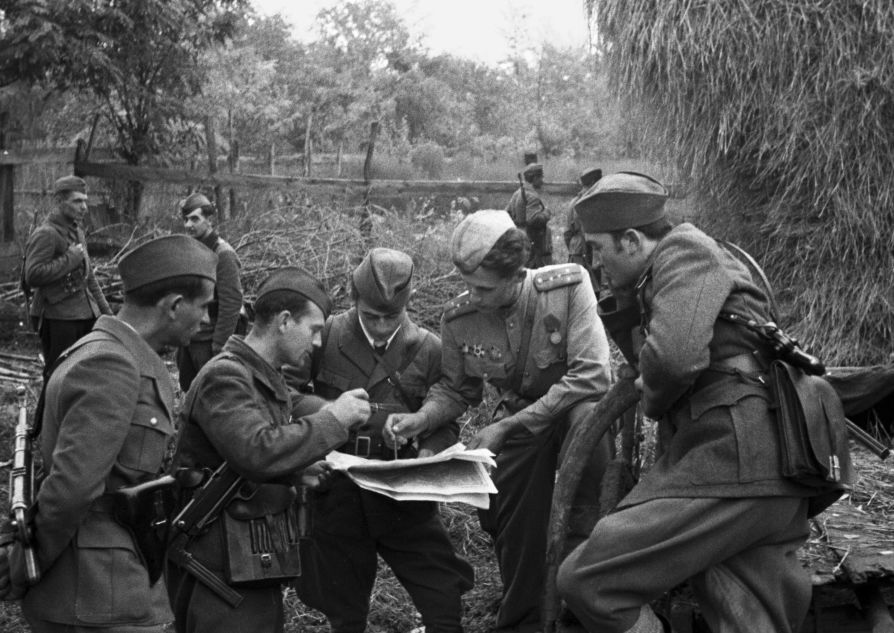On 31 January 1946, at the Constituent Assembly in Belgrade, in the presence of diplomatic envoys representing the USSR, France, Turkey, Poland, and Czechoslovakia, the first post-war constitution of Yugoslavia was adopted in four languages: Serbian, Croatian, Slovenian, and Macedonian. Serbia, Croatia, Bosnia and Herzegovina, Macedonia, and Montenegro joined the federation as republics.
Article 6 of Chapter II of the Constitution states:
“All authority in the Federative People's Republic of Yugoslavia derives from the people and belongs to the people.
The people exercise their authority through freely elected representative organs of state authority (…), originated and developed during the struggle for national liberation against fascism and reaction, and are the fundamental achievement of that struggle”.
Following the overthrow of the collaborationist government that had signed the Axis Powers Tripartite Pact in March 1941, the Communist Party of Yugoslavia headed by General Secretary Josip Broz Tito, the future Commander-in-Chief of the Unitary National Liberation Front of Yugoslavia, decided to engage in guerrilla warfare. By that time, Yugoslavia had already been divided into occupation zones between Germany, Italy, Hungary, and Bulgaria.
Partisan activities were also directed against the local nationalists, the Croatian Ustasha, who had proclaimed Croatian independence and, together with the Wehrmacht, took an active part in the genocide of the Serbian population. The exact number of genocide victims has not yet been established. According to various estimates, the figures range from 197,000 to 800,000. The largest mass executions were in Kraljevo and Kragujevac.

The Holocaust numbers on victims are more accurate. Some 66,000 people of Jewish nationality or as much as 82% of Yugoslavia’s pre-war Jewish population were killed.
In 2006, sixty years after the Constitution was adopted, Montenegro would declare its independence and Yugoslavia would disappear from the map.
Sources:
‘Yugoslavia – manipulations with the number of Second World War victims’ by Vladimir Žerjavić
‘Krajina u ratu ‘1941-1945 by Mane Pešut
The 1946 Constitution of the Federative People's Republic of Yugoslavia
The Jewish Encyclopaedia in Russian on the Web
























